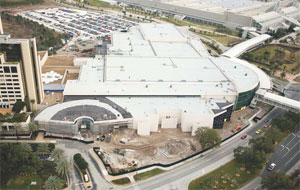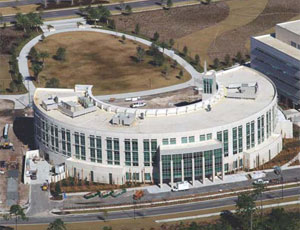When an architecture firm remodels its office, the project has the potential to be much more than just new carpet and workspaces. MHTN Architects Inc., Salt Lake City, recognized that potential and made the most of it with its recent $1.3-million corporate office remodel.


In December, MHTN became the first Utah design firm to receive the U.S. Green Building Council’s LEED-Gold certification for its own office. “From the start, we wanted to use principles of sustainability and decided that should be the thing that guided us through,” says Bryce Jones, MHTN president emeritus.
The goal did not stop at sustainability. MHTN wanted its office to be an example for its clients. “We went with LEED instead of just making the office sustainable because LEED is an indicator of how green a project is,” says MHTN Project Designer Chad Nielsen. “We felt it was important to demonstrate the level of sustainability.”
In spite of just recently receiving the LEED certification, MHTN’s employees have been enjoying what that means for the past two years. The project began in February 2007 and was completed nine months later in November. The project team chose to schedule the project in three phases because the firm continued to occupy the space throughout the remodel. While this was one of the project’s challenges, Nielson says the building’s landlord let them use unoccupied spaces.
In addition to a lease that was about to expire, MHTN’s remodel was motivated by growth. “We had plans for firm-wide expansion,” says Kyle Taft, MHTN vice president. “The economy was booming and we foresaw
a larger staff to be able to meet our client commitments.”
Staying Put
After looking at other possible locations, the design team decided it made more sense to stay where they were and expand to an adjacent upper floor. “There were a lot of advantages to staying where we were,” says Jones. Some of those advantages include its downtown location, easy access to public transportation and the options for use of daylighting in the remodel.
Staying in the same space also allowed for the reuse of a lot of materials. “We didn’t just throw everything out and start over,” says Jones. “We reused a lot of things; we just did a better job of using what we already had.”
In addition to providing a functional and inviting work environment, the remodeled office is a showcase for clients and the public of green materials, creative design and solutions within the LEED framework. “We wanted to really show to future clients just what can be done,” Nielsen says. “We wanted to show that going green doesn’t have to look bad.”
MHTN believes strongly in the philosophy of sustainable design and construction. “What better way to show our commitment to the world and to our clients than to use the principles of sustainable design for our own project,” says Taft. “How could we ask others to make this commitment unless we made the commitment ourselves?”

Post a comment to this article
Report Abusive Comment